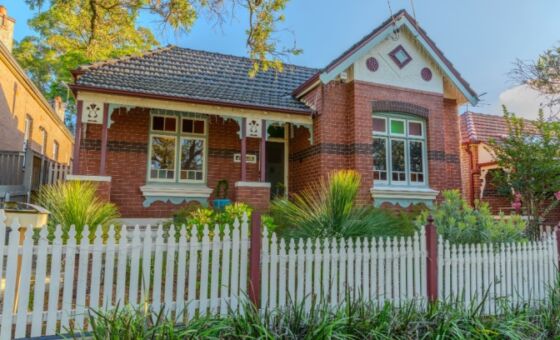Compare Construction Loans
Looking for a loan to build or renovate? The table below shows construction loans from our online partners.

 Owner occupied
Owner occupied
 20% min deposit
20% min deposit
 Redraw facility
Redraw facility
 Owner occupied
Owner occupied
 30% min deposit
30% min deposit
 Redraw facility
Redraw facility
 Owner occupied
Owner occupied
 30% min deposit
30% min deposit
 Redraw facility
Redraw facility
 Owner occupied
Owner occupied
 30% min deposit
30% min deposit
 Redraw facility
Redraw facility
 Owner occupied
Owner occupied
 20% min deposit
20% min deposit
 Redraw facility
Redraw facility
 Owner occupied
Owner occupied
 20% min deposit
20% min deposit
 Redraw facility
Redraw facility
 Owner occupied
Owner occupied
 20% min deposit
20% min deposit
 Redraw facility
Redraw facility
 Owner occupied
Owner occupied
 10% min deposit
10% min deposit
 Redraw facility
Redraw facility
 Owner occupied
Owner occupied
 10% min deposit
10% min deposit
 Redraw facility
Redraw facility
Showing 15 of 1124 results
To see more results adjust the filters above
Unsure of a term in the above table? View glossary
The initial results in the table above are sorted by Star Rating (High-Low) , then Comparison rate^ p.a. (Low-High) , then Provider Name (Alphabetical) . Additional filters may have been applied, which impact the results displayed in the table - filters can be applied or removed at any time.
What is a construction loan?
A construction home loan is a type of home loan designed for people who are building a home or doing major renovations, as opposed to buying an established property. It has a different loan structure to home loans designed for people buying an existing home.
A construction loan most commonly has a ‘progressive drawdown’. This means you may receive instalments of the loan amount at various stages of construction, rather than receiving it all at once at the start. You generally only pay interest on the amount that is drawn down, as opposed to on the whole loan amount. Some lenders may also ask you to make contributions to the loan from your own savings, or to provide evidence that you will be able to afford the full loan amount.
A number of lenders offer construction loans that are interest-only during the construction period and then revert to a standard principal and interest loan once your home has been fully built.
Of course, a construction loan is just one potential source of funding for your project. You may also be eligible for government grants and concessions, particularly if you are a first home buyer, for example. Or, for renovators, there could be the option to refinance an existing mortgage or take out a personal loan. It could be a wise idea to seek professional financial advice when considering your options.
How to get a construction loan?
Getting approved for a construction loan is generally a different process to applying for a standard home loan to buy an existing home.
You’ll typically need to provide the lender with documents, including council-approved plans and building specifications, a copy of your fixed-price building contract with a licensed builder, and any applicable insurance documentation (such as a copy of your builder’s public liability insurance and builder’s risk insurance). You’ll also be subject to normal lending criteria, meaning you will most likely need to provide details of your income and expenses and your credit score could prove an important factor.
A property appraiser will then typically estimate the expected value of the property when completed. This is because when you apply for a construction loan, the lender may consider the expected value of the property upon completion of construction, as well as the total amount required to borrow in order to pay the builder. The lender will typically also require further property valuations and inspections during the project.
If your loan is approved, your lender will give you a loan offer. You will then have to make a deposit, as you would with most other types of home loans. This acts as a form of security at this stage of construction. A larger deposit can help to convince your lender that you are a less risky borrower. You’ll typically need at least a 5% deposit, keeping in mind that you may have to pay lender’s mortgage insurance if your deposit is less than 20%.
For each stage of the construction process, you’ll usually have to confirm that the work has been done, complete and sign a drawdown request form, and send it to the construction department of your lender. Your lender may also request an invoice from your builder for the cost of the work done.
Frequently Asked Questions about Construction Loans
Latest in home loans
Canstar Star Ratings and Awards
Looking for an award-winning product or to switch providers or brands? Canstar rates products based on price and features in our Star Ratings and Awards. Our expert Research team shares insights about which products offer 5-Star value and which providers offer outstanding value overall. We also reveal which providers have the most satisfied customers in our dedicated Customer Satisfaction Awards.
Explore more home loans:
Pre-approval home loans
Compare loans.com.au home loans
Refinance Home Loan Comparison
Compare Investment Home Loan Rates
Compare low deposit home loans
Compare some of the best variable rate home loans
Summerland Bank Home Loans & Rates
Home loan options
Family home guarantee scheme
Unloan home loans
Home Loans for First Home Buyers
Compare Fixed Rate Home Loans
About the authors
Nina Rinella, Editor-in-Chief

Joshua Sale, GM, Research

As Canstar’s Ratings Manager, Josh Sale is responsible for the methodology and delivery of Canstar’s Home Loans Star Ratings and Awards and the Home Loan Refinance Awards. With tertiary qualifications in economics and finance, Josh has worked behind the scenes for the last five years to develop Star Ratings and Awards that help connect consumers with the right home loan for them.
Josh is passionate about helping consumers get hands-on with their home loans, always reminding home buyers that finding the right loan can be as important for your finances as negotiating a fair property purchase price. Josh has been interviewed by media outlets such as the Australian Financial Review, news.com.au and Money Magazine, discussing topics including home loan equity and wider finance trends.
When it comes to Josh’s own property journey, the home loans expert once bought two houses in the same transaction when he ensured the cubby house his daughter loved was listed on the purchase contract for his new home.
You can follow Josh on LinkedIn, and Canstar on Twitter and Facebook.
Important information
For those that love the detail
This advice is general and has not taken into account your objectives, financial situation or needs. Consider whether this advice is right for you.





